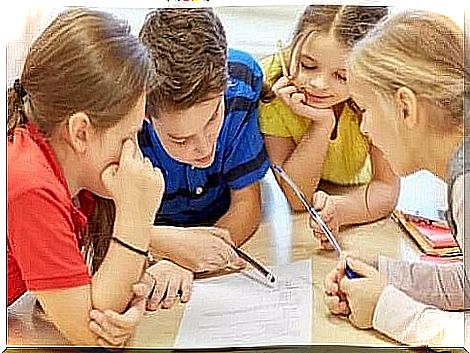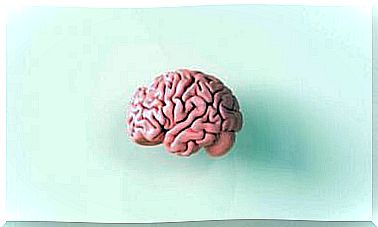To Teach And Learn How To Think

Traditional education is based on a systematic and mechanical learning process where the main goal is to memorize. Currently, many studies speak for different ways of teaching and learning. One of the main goals of this educational revolution is to learn how to think, and it is safe to say that we are all witnessing it little by little. The main goal here is to give students tools to search for information themselves and assimilate it in a critical way.
It is important to change the processes and prepare the students so that they can make good analyzes, solve problems effectively and make good decisions in the future. For this reason, it is important to remember that all our actions are based on our thoughts when it comes to teaching and learning to think. This will help individuals, from a very young age, to become good thinkers and not just dedicate themselves to memorizing.
The importance of teaching and learning how to think
In most schools, no pedagogical models teach students how to think. Traditional schools continue to use conventional tools, methods and short-term techniques. Teachers spend almost all of their time teaching students to solve equations and memorize texts that they are unlikely to remember in a few days.
However, many other education professionals focus on methods based on understanding, the value of questions instead of answers, and create new ways to solve problems using thinking. To achieve this, it is also necessary to renew procedures and tools.

What does mind-based learning (TBL) consist of?
As of now, many educational institutions have taken a step forward. In a way, they have recognized that traditional methodology focuses on repetition with very little significance of its own. Basically, this teaching model is ineffective because critical and reflective thinking is not practiced.
Think-based learning (TBL) provides more conscious and thorough learning. In fact, it is able to change the way the teacher handles new information. Robert Swartz, one of the most influential personalities in the field of education and the creator of this method, defines it as a methodology that teaches how to think creatively and critically.
Robert Swartz further explains that this method arose when he attended a history class in Boston. The teacher offered the students their two different stories to think about and asked them to think about which one to believe. At that moment, Swartz realized that the children were learning to decide if what they were reading was something they should accept as truthful and reliable. In conclusion, he found that one could apply this perspective to everything.
This active method goes beyond the content. First, it ensures that students learn to think and have the opportunity to solve problems in the real world. Second , it encourages students to think outside the box and do their own research on different topics. In this way, the learning process does not depend on memorization, but on the internalization of content.
Collaborative thinking in the classroom
To learn to think, the teacher must act as a facilitator. They must guide students to solve problems, issues and projects. With this, they encourage them to stay active during the lesson.
Teaching and learning how to think requires group work. After all, all thinking works best when there is collaboration. Sharing your thoughts and ideas with those around you encourages collaboration that in turn helps to reflect and share all kinds of learning.

Teaching and learning how to think: The importance of asking questions
Dialogue is an important resource for gaining knowledge. Already in the 500s BC. Socrates realized its usefulness and designed an entire method: Maieutics. The Socratic method considers questions as a way of developing thinking. That said, the questions in the classroom serve as an incentive for students to try to answer and / or ask new questions.
Furthermore, questions are useful for increasing students’ ability to structure their ideas, synthesize their answers and defend them through reasoning. Therefore, there is an increase in their autonomy. Suddenly, they feel safe enough to explore unknown fields. In this way, a good teacher knows which questions are most appropriate for each situation.
Six thinking hats
Edward De Bono created the six thinking hat technique to facilitate problem analysis or solution from different points of view. It serves to stimulate lateral and creative thinking and encourage parallel thinking, and is an alternative to traditional reasoning.
The six thinking hats represent six ways of thinking. Each of them has a different color, which represents the direction of thought that one can use when facing a problem. In this technique, each participant imagines putting on and taking off a hat to point out the type of thinking they are using.









